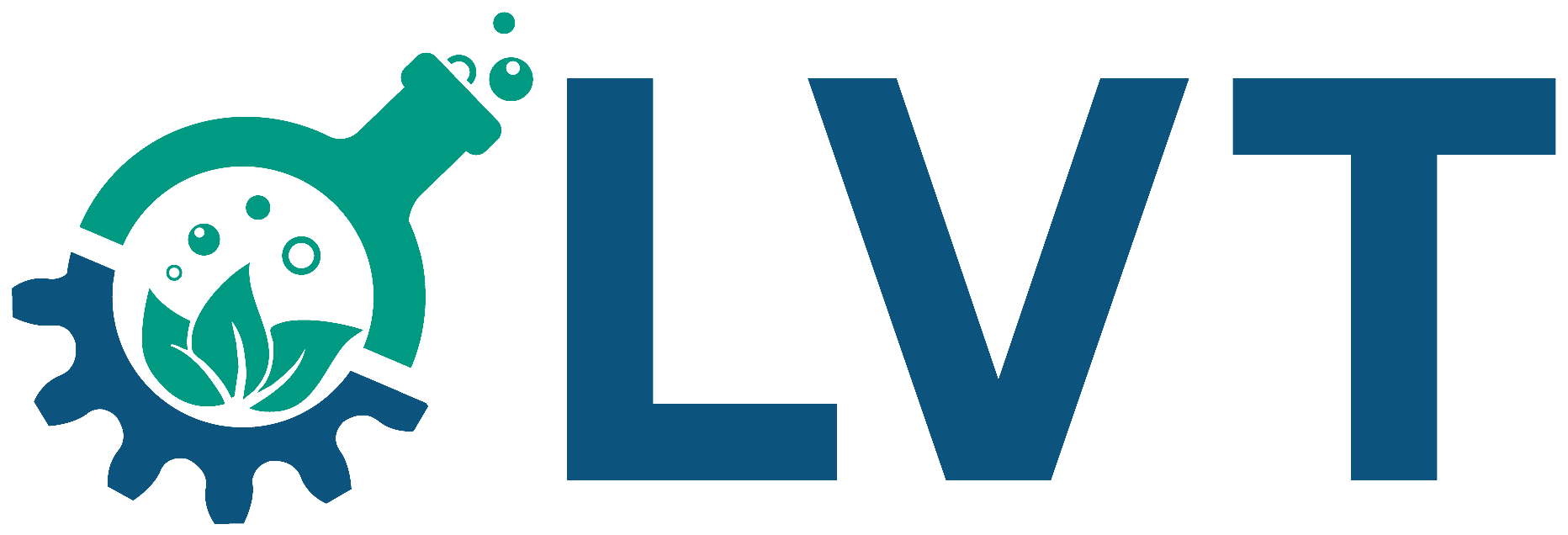
Dr.-Ing. Gabriela Itziar Saavedra Isusi
- Flüssigkeitszerkleinerung
- gabriela isusi ∂does-not-exist.partner kit edu
Thermo Fisher Scientific GmbH
Dieselstraße 4
76227 Karlsruhe
Deutschland
Publications
2024
Influence of Lowering the pH Value on the Generation of Fibrous Structures of Protein Gels with Different Network Types
Ellwanger, F.; Fuhrmann, M.; Karbstein, H. P.; Saavedra Isusi, G. I.
2024. Gels, 10 (3), Art.-Nr.: 173. doi:10.3390/gels10030173
Ellwanger, F.; Fuhrmann, M.; Karbstein, H. P.; Saavedra Isusi, G. I.
2024. Gels, 10 (3), Art.-Nr.: 173. doi:10.3390/gels10030173
2023
Influence of Rapeseed Oil on Extruded Plant-Based Meat Analogues: Assessing Mechanical and Rheological Properties
Saavedra Isusi, G. I.; Pietsch, V.; Beutler, P.; Hoehne, S.; Leister, N.
2023. Processes, 11 (7), Art.-Nr.: 1871. doi:10.3390/pr11071871
Saavedra Isusi, G. I.; Pietsch, V.; Beutler, P.; Hoehne, S.; Leister, N.
2023. Processes, 11 (7), Art.-Nr.: 1871. doi:10.3390/pr11071871
2021
Emulsions stabilised with pectin-based microgels: Investigations into the break-up of droplets in the presence of microgels
Saavedra Isusi, G. I.; Lohner, N.; Karbstein, H. P.; Schaaf, U. S. van der
2021. Journal of Food Engineering, 294, Art. Nr.: 110421. doi:10.1016/j.jfoodeng.2020.110421
Saavedra Isusi, G. I.; Lohner, N.; Karbstein, H. P.; Schaaf, U. S. van der
2021. Journal of Food Engineering, 294, Art. Nr.: 110421. doi:10.1016/j.jfoodeng.2020.110421
Emulsions stabilised with pectin-based microgels: investigations into the effect of pH and ionic strength on emulsion stability
Saavedra Isusi, G. I.; Weilandt, M.; Majollari, I.; Karbstein, H. P.; Schaaf, U. S. van der
2021. Food & function, 12 (16), 7227–7238. doi:10.1039/D1FO00891A
Saavedra Isusi, G. I.; Weilandt, M.; Majollari, I.; Karbstein, H. P.; Schaaf, U. S. van der
2021. Food & function, 12 (16), 7227–7238. doi:10.1039/D1FO00891A
2020
Polymer or microgel particle: Differences in emulsifying properties of pectin as microgel or as individual polymer chains
Saavedra Isusi, G. I.; Bindereif, B.; Karbstein, H. P.; Schaaf, U. S. van der
2020. Colloids and surfaces / A, 598, Art.-Nr.: 124793. doi:10.1016/j.colsurfa.2020.124793
Saavedra Isusi, G. I.; Bindereif, B.; Karbstein, H. P.; Schaaf, U. S. van der
2020. Colloids and surfaces / A, 598, Art.-Nr.: 124793. doi:10.1016/j.colsurfa.2020.124793
Microstructures and conformational arrangement in emulsions caused by concentration ratios of pectin-based microgels and oil
Saavedra Isusi, G. I.; Madlindl, L. B.; Karbstein, H. P.; Schaaf, U. S. van der
2020. Colloids and surfaces / A, 602, Article: 125166. doi:10.1016/j.colsurfa.2020.125166
Saavedra Isusi, G. I.; Madlindl, L. B.; Karbstein, H. P.; Schaaf, U. S. van der
2020. Colloids and surfaces / A, 602, Article: 125166. doi:10.1016/j.colsurfa.2020.125166
2019
Microgel particle formation: Influence of mechanical properties of pectin-based gels on microgel particle size distribution
Saavedra Isusi, G. I.; Karbstein, H. P.; Schaaf, U. S. van der
2019. Food hydrocolloids, 94, 105–113. doi:10.1016/j.foodhyd.2019.02.053
Saavedra Isusi, G. I.; Karbstein, H. P.; Schaaf, U. S. van der
2019. Food hydrocolloids, 94, 105–113. doi:10.1016/j.foodhyd.2019.02.053
Presentations
2024
The pH Modulation during Plant Protein Extrusion: Impact on Meat-Like Structures
Ellwanger, F.; Fuhrmann, M.; Karbstein, H.; Saavedra Isusi, G.
2024, March. Plant Protein Extrusion Conference (2024), Chatham, United Kingdom, March 14–15, 2024
Ellwanger, F.; Fuhrmann, M.; Karbstein, H.; Saavedra Isusi, G.
2024, March. Plant Protein Extrusion Conference (2024), Chatham, United Kingdom, March 14–15, 2024
2021
Einfluss des Öl-Mikrogel-Konzentrationsverhältnisses auf die Emulgierwirkung von pektinbasierten Mikrogelpartikeln
Saavedra Isusi, G. I.; Madlindl, L.; Karbstein, H. P.; Schaaf, U. S. van der
2021. Jahrestreffen der ProcessNet-Fachgruppen Lebensmittelverfahrenstechnik, Mischvorgänge, Grenzflächenbestimmte Systeme und Prozesse (2021), Online, March 11–12, 2021
Saavedra Isusi, G. I.; Madlindl, L.; Karbstein, H. P.; Schaaf, U. S. van der
2021. Jahrestreffen der ProcessNet-Fachgruppen Lebensmittelverfahrenstechnik, Mischvorgänge, Grenzflächenbestimmte Systeme und Prozesse (2021), Online, March 11–12, 2021
2019
Characterization of the mechanical response of pectin-based gels towards dispersing forces used in top down microgel formation processes
Saavedra Isusi, G. I.; Drieß, A.; Karbstein, H. P.; Schaaf, U. S. van der
2019. 20th Gums and Stabilisers for the Food Industry Conference (2019), San Sebastián, Spain, June 11–14, 2019
Saavedra Isusi, G. I.; Drieß, A.; Karbstein, H. P.; Schaaf, U. S. van der
2019. 20th Gums and Stabilisers for the Food Industry Conference (2019), San Sebastián, Spain, June 11–14, 2019
Posters
2024
Modulation of the fibrous structures of high moisture meat substitutes by altering the pH
Ellwanger, F.; Fuhrmann, M.; Schaaf, U. van der; Karbstein, H.; Saavedra Isusi, G.
2024, April. Annual European Rheology Conference (AERC 2024), Leeds, United Kingdom, April 9–12, 2024
Ellwanger, F.; Fuhrmann, M.; Schaaf, U. van der; Karbstein, H.; Saavedra Isusi, G.
2024, April. Annual European Rheology Conference (AERC 2024), Leeds, United Kingdom, April 9–12, 2024
Modulierung der faserartigen Strukturen von nassextrudierten Fleischersatzprodukten durch Veränderung des pH-Wertes
Ellwanger, F.; Fuhrmann, M.; Karbstein, H.; Saavedra Isusi, G.
2024, February. Jahrestreffen der DECHEMA/VDI-Fachgruppe Lebensmittelverfahrenstechnik (2024), Quakenbrück, Germany, February 27–28, 2024
Ellwanger, F.; Fuhrmann, M.; Karbstein, H.; Saavedra Isusi, G.
2024, February. Jahrestreffen der DECHEMA/VDI-Fachgruppe Lebensmittelverfahrenstechnik (2024), Quakenbrück, Germany, February 27–28, 2024
2023
Meat Substitutes as a Source of Protein in the Diet – Influence of Altering the pH on the Formation of Fibrous Structures
Ellwanger, F.; Fuhrmann, M.; Karbstein, H.; Saavedra Isusi, G.
2023, November. DECHEMA Infoday "Food Proteins from Biotechnology" (2023), Frankfurt am Main, Germany, November 30, 2023
Ellwanger, F.; Fuhrmann, M.; Karbstein, H.; Saavedra Isusi, G.
2023, November. DECHEMA Infoday "Food Proteins from Biotechnology" (2023), Frankfurt am Main, Germany, November 30, 2023
2022
Emulsions stabilised with pectin-based microgels: Investigations into the effect of pH and microgel particle concentrations on emulsion stability
Saavedra Isusi, G. I.; Weilandt, M.; Majollari, I.; Martin, D.; Karbstein, H. P.; Schaaf, U. S. van der
2022, June 27. 18th European Student Colloid Conference (ESC 2022), Szeged, Hungary, June 26–30, 2022
Saavedra Isusi, G. I.; Weilandt, M.; Majollari, I.; Martin, D.; Karbstein, H. P.; Schaaf, U. S. van der
2022, June 27. 18th European Student Colloid Conference (ESC 2022), Szeged, Hungary, June 26–30, 2022
Emulsionsstabilisierung mit pektinbasierten Mikrogelen: Einfluss des pH-Wertes und der Ionenstärke auf die Emulsionsstabilität
Martin, D.; Saavedra Isusi, G. I.; Weilandt, M.; Majollari, I.; Karbstein, H. P.; Schaaf, U. S. van der
2022, March 10. Jahrestreffen der ProcessNet-Fachgruppen Lebensmittelverfahrenstechnik und Trocknungstechnik (2022), Frankfurt am Main, Germany, March 10–11, 2022
Martin, D.; Saavedra Isusi, G. I.; Weilandt, M.; Majollari, I.; Karbstein, H. P.; Schaaf, U. S. van der
2022, March 10. Jahrestreffen der ProcessNet-Fachgruppen Lebensmittelverfahrenstechnik und Trocknungstechnik (2022), Frankfurt am Main, Germany, March 10–11, 2022
At interfaces absorbed microgel particles stabilize emulsions
Saavedra Isusi, G. I.; Weilandt, M.; Majollari, I.; Martin, D.; Karbstein, H. P.; Schaaf, U. S. van der
2022. 36th Conference of the European Colloid and Interface (ECIS 2022), Chania, Greece, September 4–9, 2022
Saavedra Isusi, G. I.; Weilandt, M.; Majollari, I.; Martin, D.; Karbstein, H. P.; Schaaf, U. S. van der
2022. 36th Conference of the European Colloid and Interface (ECIS 2022), Chania, Greece, September 4–9, 2022
2019
Influence of mechanical properties of pectin-based gels on obtained particle size distribution during top down microgel formation
Saavedra Isusi, G. I.; Drieß, A.; Karbstein, H. P.; Schaaf, U. S. van der
2019. Jahrestreffen der ProcessNet-Fachgruppen Agglomerations- und Schüttguttechnik und Lebensmittelverfahrenstechnik (2019), Lausanne, Switzerland, March 5–7, 2019
Saavedra Isusi, G. I.; Drieß, A.; Karbstein, H. P.; Schaaf, U. S. van der
2019. Jahrestreffen der ProcessNet-Fachgruppen Agglomerations- und Schüttguttechnik und Lebensmittelverfahrenstechnik (2019), Lausanne, Switzerland, March 5–7, 2019
2018
Structural changes in pectin-based microgel particle suspensions caused by polymer structure and ion strength
Saavedra Isusi, G. I.; Karbstein, H. P.; Schaaf, U. S. van der
2018. Jahrestreffen der ProcessNet-Fachgruppe Lebensmittelverfahrenstechnik (2018), Berlin, Germany, March 5–6, 2018
Saavedra Isusi, G. I.; Karbstein, H. P.; Schaaf, U. S. van der
2018. Jahrestreffen der ProcessNet-Fachgruppe Lebensmittelverfahrenstechnik (2018), Berlin, Germany, March 5–6, 2018

